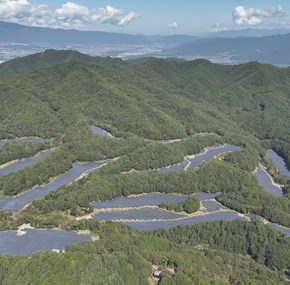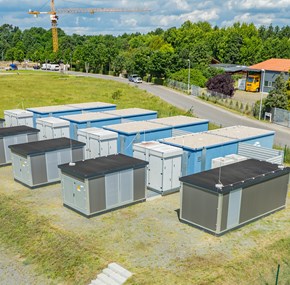5 things to do to become a green company
Climate changes challenge us and are much in focus in the public debate. So how can companies make the most sustainable choices? Obton talked to Christian Ibsen, director of the green think tank CONCITO, and he suggested the following: He would like for companies to find their biggest CO2 pruning knife and to become green from head to foot. However, less can also do it:
“Within a couple of centuries, we have to be entirely CO2 neutral. To succeed, each company must actively run its business in a sustainable way,” says Christian Ibsen.
He points to the fact that companies need to zoom in on their value chains to pinpoint where they harm the environment:
“If the company produces food products, the company has to go back and see where the food is coming from. It is necessary to go all the way out in the field and make demands on the suppliers.”
If the company chooses to go all in with sustainability and to work strategically with specific CO2-reducing targets in line with the goals from the Paris agreement that aim to keep the temperature rises below 1.5-2 degrees, the work will be in agreement with the initiative and strategy of Science Based Target:
“You have to look at all links to end up with a final plan for the company’s CO2 goals,” says Christian Ibsen and adds,
“Obviously, it is critical that the politicians set the main framework and rules, but the companies also have to take some of the responsibility. When the climate is at stake, I doubt that consumers will put up with companies simply doing nothing.”
If a company does not roll out a major analysis but still wants to grow greener and more sustainable, focusing on a few points also has effect - right where the company knows that it has a large carbon footprint. The five points that should be in focus for the company are typically the following:
Give transportation a thorough going-over
Figures from The European Environment Agency (EEA) shows that transportation is accountable for more than one fifth of the greenhouse gas emissions in EU countries.
Transportation of goods is therefore an obvious area to go over carefully if you want to walk the green road. To mention an example, it saves fuel and is therefore more climate-friendly for container ships to go slower which is what Mærsk has started to do.
Down the road, fuel for ships as well as lorries and airplanes can be replaced with biofuels or other renewable energy - e.g. from wind turbines, wave power or solar cells.
All forms of transportation must be filled up with goods. Fewer deliveries and full lorries, trains, ships and airplanes are more climate-friendly than half-empty transports. Sustainable companies will have to require climate-friendly transportation of their own finished products but also of raw material supplies from subsuppliers.
If we zoom in on the company itself, charging points can be established at the workplace for the employees’ electric vehicles and bathrooms for employees who choose their bicycles and the resulting exercise. Finally, one or more companies working together can offer free transportation with an electric bus from the nearest train station - and schedule meeting times accordingly.
Throw out old machines and invest in green energy
To be a green company, reducing the energy and resource consumption as much as possible is necessary. For example, switching to more modern manufacturing machines that are also more energy-efficient often makes sense. Machines that are not supposed to be on may not be left running. Any waste heat from the production should be recycled.
Replacing resources that are problematic to the climate also makes sense - like LEGO that is currently replacing fossil plastic with bioplastic.
Once the energy and resource consumption has been reduced at the company as well as for subsuppliers, converting to solar cells or other renewable energy is recommended. That is better for the climate and also for the company's climate profile. It also supports the Danish goal of having all electricity come from renewable energy by year 2030.
At the same time, investing in renewable energy such as solar cells or wind turbines might also be good business. If for example your company emits 260,000 kg CO2 a year, you can invest DKK 1 m. in solar energy - e.g. through Obton - and thus become CO2 neutral.
An analysis from Finance Denmark shows that more than 80 per cent of Danish investors are interested in sustainable investments - including green investments.
Save water
Getting clean water is becoming ever more challenging across the globe. Reducing the water consumption therefore makes sense - the way it is seen at many filling stations where car washes today use recycled wash water after local treatment.
Water savings should occur both in the production if the production consumes a lot of water but also in office spaces and cafeterias. Quite simply, water can often be saved by replacing toilets and water-consuming machines, changing routines and finally by purifying water locally if there are no good public purification plants.
Finally, rainwater can also be collected from roofs if the water can be used in the company. Water savings makes sense, especially in countries with water scarcity - as is the case in many Asian and Southern European countries.
Eat less meat and drive electric vehicles
Looking at energy and resource optimisation in the production as well as in the operations of the company itself is important. We have already looked at everything from new toilets to charging points for electric vehicles. These might be minor matters, but yet worthwhile - which is also the case when it comes to choosing climate-friendly food in the cafeteria.
Minor and visible thing are important to show that the company leads the way and takes green choices. They are also important to engage all employees in the company - for the sake of the climate but also because it makes the company more competitive when the management is listening to the employees’ proposals for sustainable initiatives.
Make demands on your subsuppliers
One of the most important points might be to make demands down the supply chain. Very often, only the end producer’s climate profile is visible to the customers. Subsuppliers have no end customers. In order for improvements to take place, the company with the end products will have to make demands on subsuppliers - on behalf of its own end customers.
The demands may e.g. be to convert to renewable energy within a number of years, to implement resource savings or use sustainable transportation. In general, suppliers with a low carbon footprint should be chosen.
Only if the entire resource chain is engaged, a company can act sustainably for real.
The information in the five points is primarily based on professional knowledge from CONCITO






